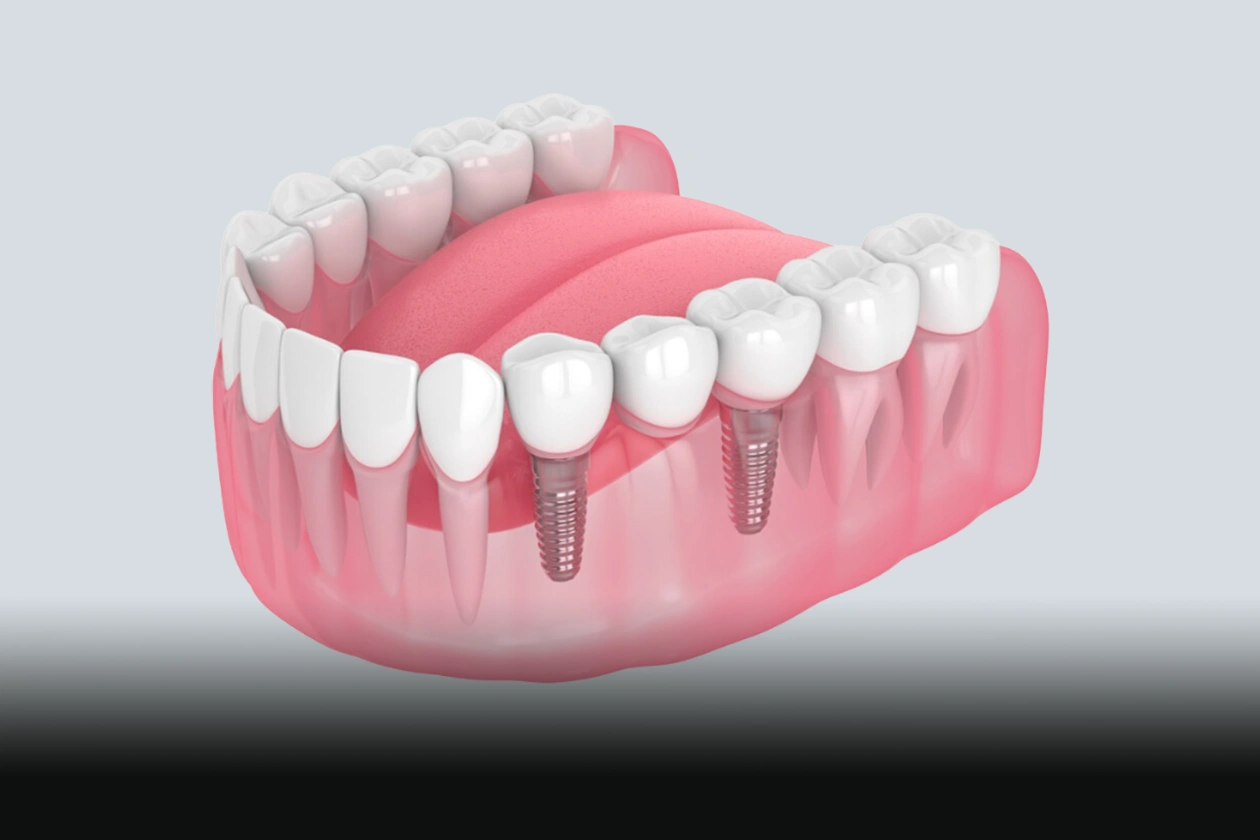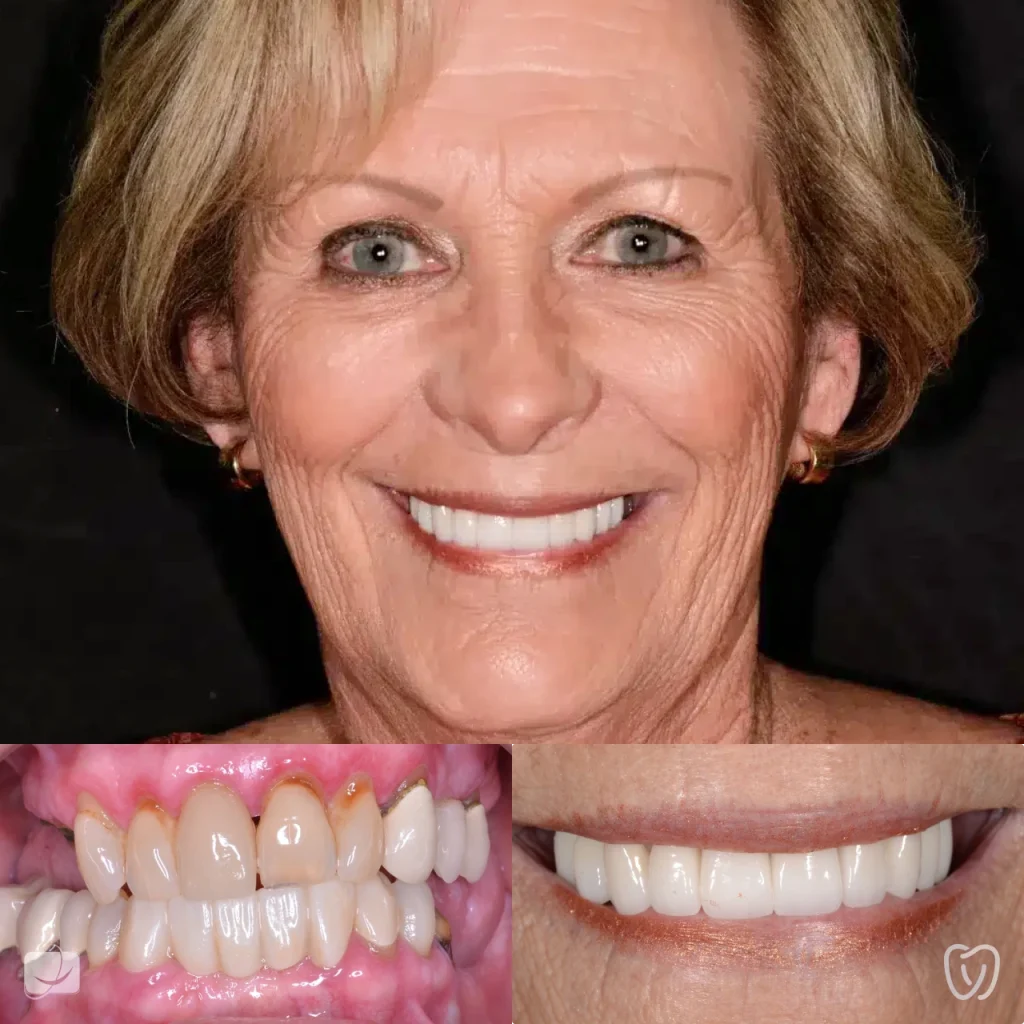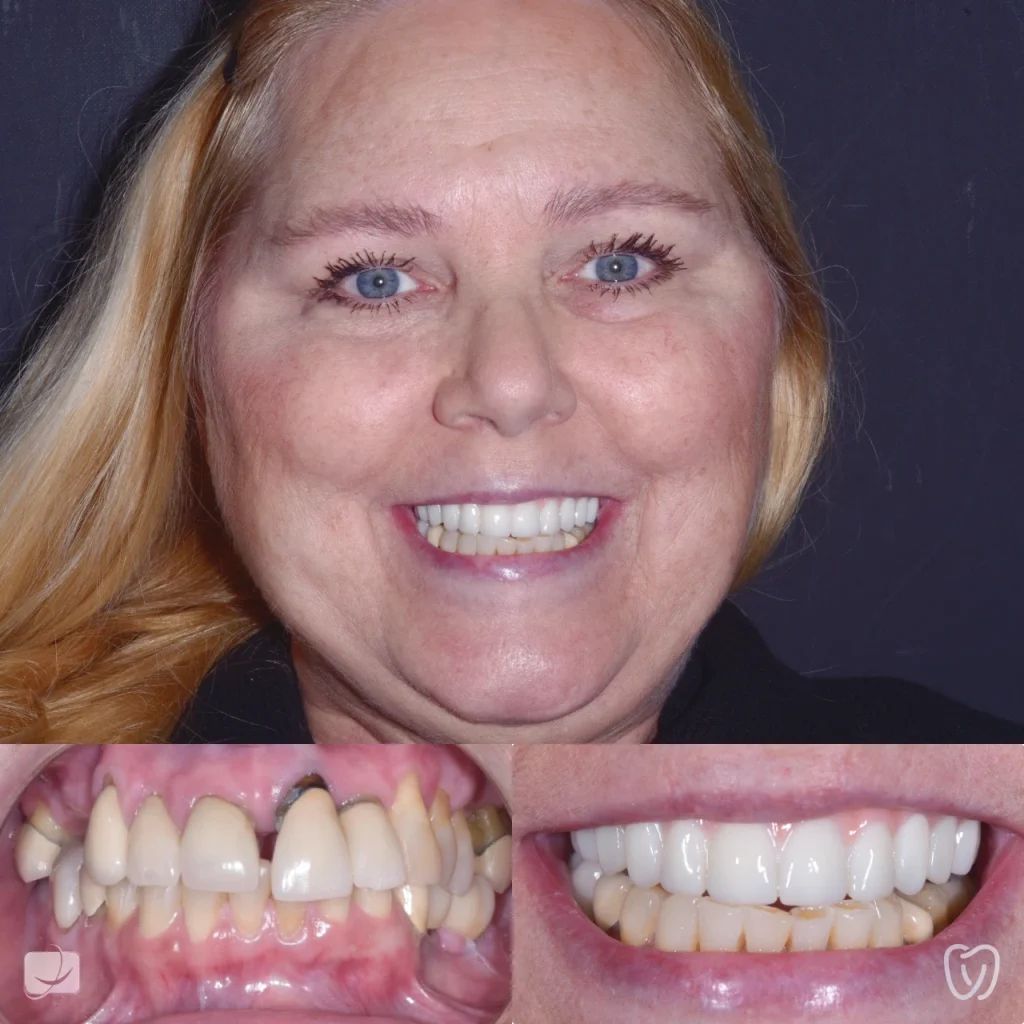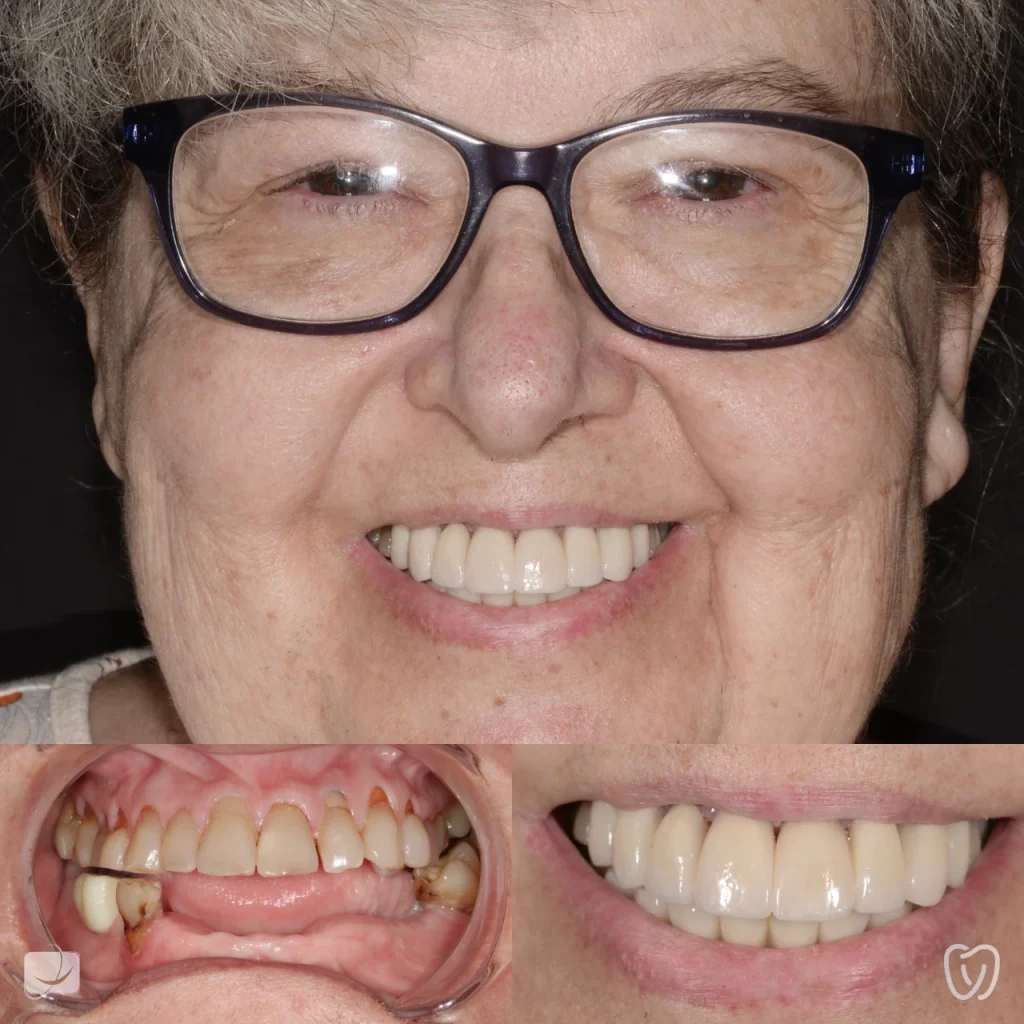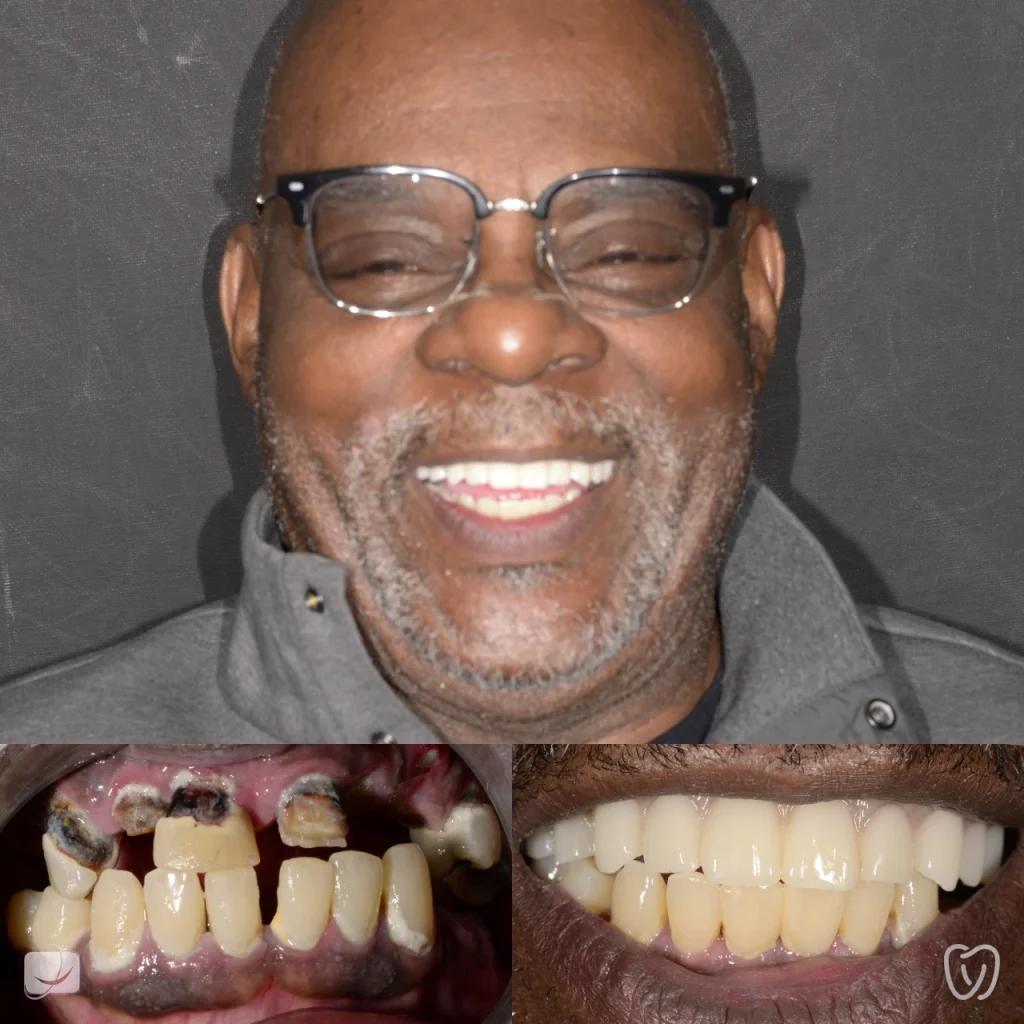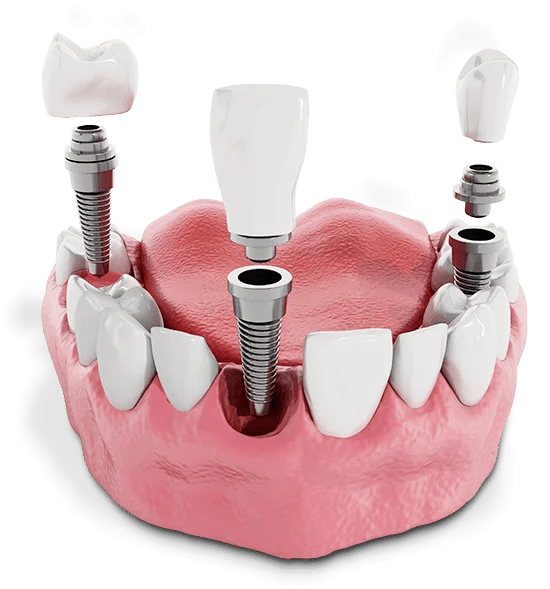
What are Single Tooth Implants & Multi-Tooth Bridges?
Natural appearance
Stable and natural chewing
Permanently secured
Significantly reduces bone loss after extraction of natural teeth
No impact to nearby teeth
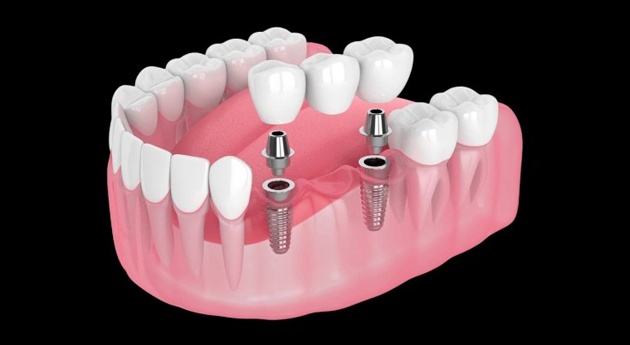
How it Works
A dental implant is a titanium screw that’s placed into your jawbone which serves as the foundation to replace a tooth or teeth.
There are 3 parts to a dental implant:
- Implant post (or body) | This is the foundation. It is placed in the jaw and acts as an anchor.
- Abutment | This piece connects the implant post and crown.
- Crown | This is the visible portion that looks like a natural tooth. This could also be an implant bridge across multiple implants.
Full-Mouth Implants vs. Traditional Dentures
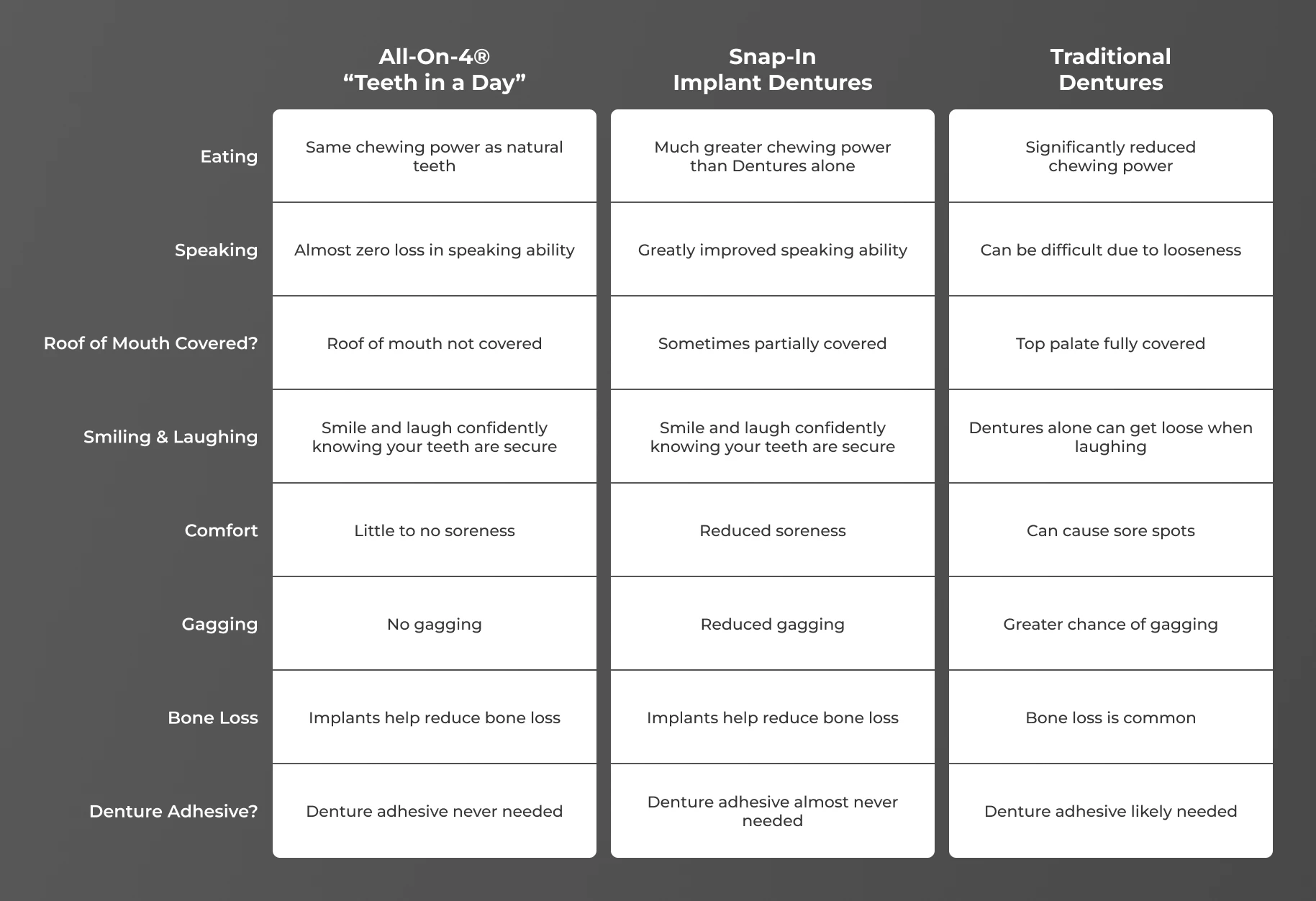
Available Financing Options
Dental Implants are an important investment in yourself. Having the option to break this investment down into monthly payments can help make these life-changing services more accessible and easier to fit into your budget. We work with a variety of financing providers that offer payment plans to cover either all or part of your dental implant procedure. This is a great option for all patients, especially those who are on a fixed income. With these flexible financing options, you can enjoy the benefits of a healthy, beautiful smile without breaking the bank.
Contact us to learn more about our financing options and schedule your FREE Consultation with Dr. Young today!
Dental Implant Procedure Timeline
The process typically takes around 6 months from start to finish.Frequently Asked Questions
The necessity for dental implants varies based on several factors, including the number of missing teeth, their location, and your overall oral health. In some cases, you may need a separate implant for each missing tooth, while alternative solutions may be available in other situations.
If you have several missing teeth in a row, you might not require an individual implant for each one. Instead, options like a dental implant-supported bridge or a partial denture could be recommended. These solutions use fewer implants to support a bridge or denture that fills the gap left by multiple missing teeth.
Ultimately, it’s best to consult with our dentist, who can assess your specific situation. They will consider factors such as your oral health, bone density, and aesthetic goals to develop the most suitable treatment plan for you.


